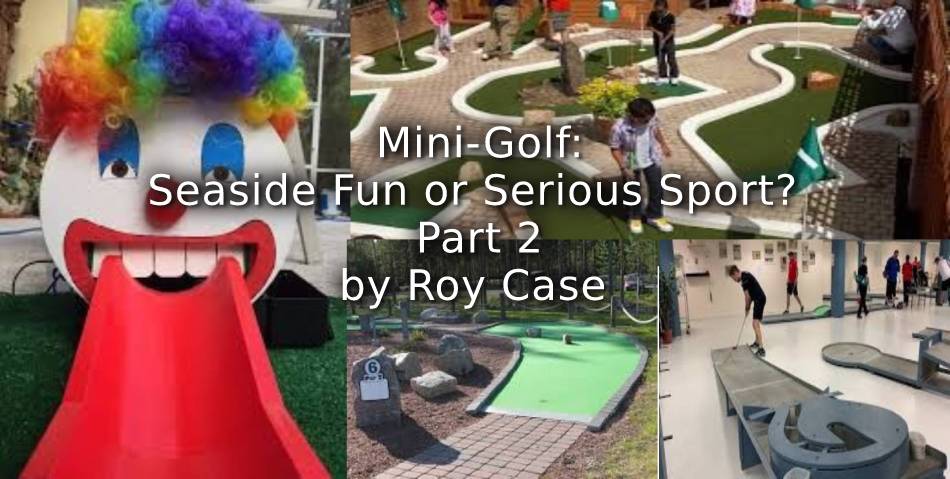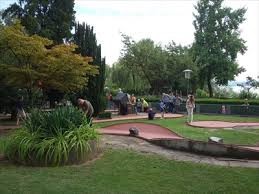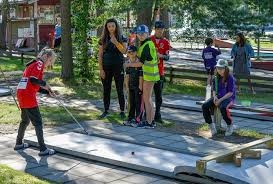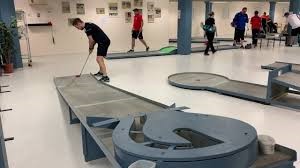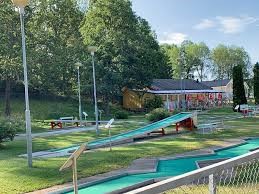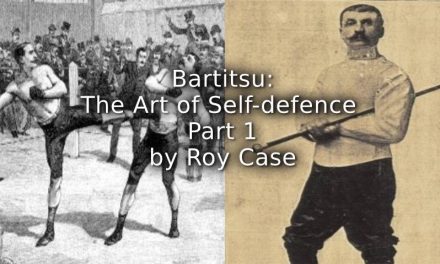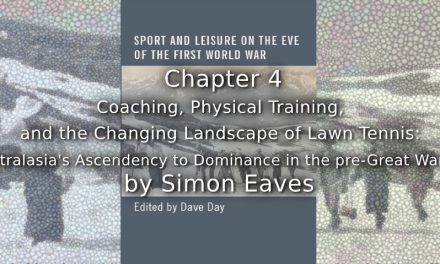Missed Part 1 then read it HERE
Motivated by his visit to the USA, Fr. Schröder witnessed the popularity and widespread development of mini-golf courses across the country. On his return home in 1926 Schröder was inspired to build the first mini-golf course in Hamburg Germany. And many other mainland European countries were similarly motivated by the American mini-golf boom of the 1930s, and as a consequence numerous mini-golf courses were developed leading to a European rise in the sport which still continues to flourish.
- ‘Pia’s Minigolf’. Meersburg, Baden-Württemberg. Germany
- Swedish Min-golf Youth Championship 2020
And yet there are few places in Europe that can boast a mini-golf history to compare with that of the city of Eskilstuna, in Södermanland County, Sweden. It began in the 1920s when Edwin O Norrman moved to the USA, where he spent ten years witnessing the golden years of the American mini-golf boom. He returned to Sweden in 1930, armed with a host of innovative ideas, and together with his close friend, Eskil Norman, formed a company, ‘Norman & Norrman Miniatyrgolf’. Its goal being to introduce mini-golf to Sweden, and develop standardised mini-golf and crazy golf courses in public parks and other suitable locations through the Country.
The oldest course, the Eskilstuna Bangolfklubb [EBGK], was founded in 1932 and was curiously closed down in 1933, but then re-opened in 1934. During the 1950s and 1960s, EBGK won three Swedish championship gold medals. EBGK was one of the seven clubs which originally founded the Swedish Mini-golf Federation [Svenska Bangolfförbundet].
Eskilstuna Bangolfklubb
Founded in 1937 the Swedish Mini-golf Federation is the oldest mini-golf sport organisation in the world, with a registered membership of approximately 10,000 competition players. National Swedish Mini-golf Championships have been played annually since 1939. By 2006-2007, Sweden had become a European Mini-golf super power, closely followed by Germany, Austria and Switzerland.
In 1955 Dr. Walter Spier introduced mini-golf to the spa town of Traben-Trarbach, which lies in the ‘Valley of Dawn’ at the foot of the former fort of Mont Royal on the banks of the Middle Moselle in the state of Rhineland-Palatinate. The country’s first mini-golf club was founded in Traben-Trarbach in 1958, two years after the first German national championships were held there.
By 1960 mini-golf was becoming incredibly popular, with 15,000 people playing on Hamburg’s five miniature golf courses. And five years later, over 100 miniature golf courses existed in Germany.
With more than 20 million Germans now playing the sport for fun, it is claimed there are about 4,000 courses in Germany, and more than 300 mini-golf clubs. According to the 2002 World Minigolfsport Federation [WMF] it is ‘the ninth most popular leisure time sport activity of the Germans’. With a national federation of 11,000 competing members, a national coaching structure has been established to support the junior, adult and senior national teams.
Austria emerged relatively late on the European mini-golf scene, when it formed the ÖMSV [Österreichischer Minigolf-Sportverband] in 1961. Two years later it created the ÖSVM [Österreichischer Miniaturgolf-Sportverband] in Vienna. The two organisations, Minigolf and Miniaturgolfverband, were amalgamated in 1967 with the establishment of the ÖBGSV.
Both Austria and near neighbours Switzerland can lay claim to a few thousand licensed competition players, and even though Italy, the Czech Republic and the Netherlands cannot count their licensed players in thousands, they have traditionally all sent strong teams to compete in international championships.
Fifty-four players took part in the first known Finnish championship in the south western city of Pori, in 1973, and an annual championship has been played ever since. Finland’s first concrete course was built in Pori in 1988.
The Turku Mini-golf Club was founded on the southwest coast of Finland in the city of Turku the following year. The region was originally called Suomi [Finland], which was later taken as the name for the Country. But it is said the oldest mini-golf club in Finland is in the ancient early 17 century city of Vaasa on Finland’s west coast. The Finnish Mini-golf Association was founded in 1980, and became a member of the WMF in the same year. Still in their infancy Hungary and Latvia joined the World Mini Golf Sport Federation in 1996.
The Israeli Mini-golf Association [IMA] was formed in 2010, and there are now a number of attractive mini-golf courses in prime locations situated around Israel. Since its formation it has founded the first competitive league, playing in accordance with the rules of WMF [World Mini-golf Sport Federation] and USPMGA.
Today almost all European countries have an official national federation for promoting mini-golf as a competitive sport, which young and old can enjoy on a regular basis. The bi-annual European Championships attract competitors from more than 20 European countries. Most of which were not founded until the late 1950s, due to the economic recession which followed World War II.
The European Mini-golf Sport Federation [EMF] was established in Romania in 1959. Its members are national mini-golf federations, and it is the umbrella organisation for mini-golf players throughout Europe. Managed by an Executive Board it hosts a delegate’s conference every two years. Competitions promoted by the EMF include the European Championships, Nations Cups, and the Mini-golf Champions League Final, which was formerly known as the European Cup. The Seniors World Championship is supported by the EMF, while World & European Youth Competitions are promoted by the WMF.
Many of the mini-golf federations in mainland Europe receive annual funding from their respective governments, but in England, where the British Mini-golf Association [BMGA] was founded in 1998, the national sports organisation Sport England refuse to accept the BMGA as a member. Since Sport England can only accept one variant of a sport into membership, mini-golf is not accepted as it is designated a variant of conventional golf.
Internationally the sport of miniature golf is governed by the WMF, which represents around 40,000 registered competition players from 37 countries. It has its headquartered in Göteborg, Sweden, from where it organises biennial World Championships for youth and elite players, and Continental Championships in Europe, Asia and the United States. Even though the playing skills of Men and women are recognised as being similar, they continue to compete separately in competition. The exception being some team competitions and pairs competitions.
The WMF is a member of Sport Accord, a global not-for-profit sports event organisation involved in the development and business of sport. Sport Accord annually brings together representatives from more than 125 International Sport Federations.
As a result of the interest shown in miniature golf by a number of celebrity golfers, such as the legendary ‘Golden Bear’, Jack Nicklaus [Born 1940], one of the greatest golfers of all time, country club style miniature golf courses began to make a comeback towards the end of the 1990s. And today a select number of miniature golf tournaments are held on Mini-golf Open Standard courses [MOS] in conjunction with some specific major events. Most common in North America and Great Britain, these types of tournament course were approved by the WMF in 2007, in an attempt to strengthen the position of the WMF and develop the mini-golf movement worldwide.
The most prestigious MOS mini-golf competitions include:
The US Masters Tournament:
Held at the Augusta National Golf Club in Georgia, one of the most famous and exclusive golf clubs in the world. The Masters Tournament Par-3 contest is a golf competition that precedes the Masters Tournament at Augusta National Golf Club in Georgia. The first Par-3 contest was held before the 1960 tournament.
The US Open Championship:
This 72 hole open national championship is staged annually by the USGA over a variety of different golf courses.
The Open Championship:
Often referred to as The British Open, is the oldest and arguably the most prestigious golf tournament in the world. Founded in 1860, it now rotates between a select number of coastal links courses in the United Kingdom, under the authority of The Royal and Ancient Golf Club of St. Andrews. The Open is one of the four major golf tournaments, the others being the Masters Tournament, the PGA Championship and the US Open Championship.
The World Crazy Golf Championships [WCGC]:
Inaugurated in 2003, is held annually at the Adventure Golf Complex on the Crazy Golf Course located on the seafront at Hastings, East Sussex. Players from all over the world compete for the prestigious trophy;
The World Adventure Golf Masters [WAGM]:
The WAGM was also founded in Hastings in 2011 where it was held for the first three years. It is an annual miniature golf competition organised by the WMF for competitors from around the world.
There are also two organisations arranging national tournaments in the USA:
The Professional Putters Association [PPA]:
Founded in 1959 by Don Clayton, the founder of Putt-Putt Golf, the organisation was formed to provide tournaments and competition for those who viewed putting as a sport. The PPA has awarded over $8,000,000 in prize money since its inception.
The US Pro Mini-Golf Association [USPMGA]:
The USPMGA has represented the USA in the WMF since 1995. Known for its PGA Style tournaments it incorporates divisions for professionals, seniors [50+], women, and juniors [12 and under], the association also has a division for beginners.
No player is likely to earn sufficient to make a living from competing in mini-golf tournaments, although some may take home sufficient by engaging in a variety of types of work associated the sport. The highest amounts of prize money are invariably earned in the USA, where the winners of major competitions can pocket as much as $ 5,000.
Conversely in mainland Europe financial reward is extremely rare, including from international championships, where the pleasure of victory is usually the only reward remaining to cherish.
Only a small number of countries outside Europe have participated in international mini-golf competitions, including China, India, Japan, Taiwan, and the USA. And although national mini-golf federations exist in Australia, Mexico, Moldova, and New Zealand, very few players having ever participated in international events from any of these countries
In 1961 Arnold Palmer Enterprises was created and developed to incorporate a myriad of different business ventures, when the legendary golfer’s name became licensed and franchised to a wide-range of activities and products, including an Arnold Palmer Hospital for Women and Children, Dry Cleaning centres, and an Arnold Palmer foot detergent.
The first British Arnold Palmer mini-golf course opened in Coventry in 1965, as part of an Arnold Palmer Driving range. Palmer Mini-golf Courses quickly spread throughout Britain, and became as much a part of the British seaside as buckets and spades, cod & chips and sporadic rain showers. They included all the elements that made Crazy Golf fun, often featuring holes taken from Palmer’s favourite courses.
Fortunately, one of the very best examples of an Arnold Palmer Putting Course, which opened in 1975, can still be found at Hastings Adventure Golf in East Sussex.Sadly over the years a great many of the UK Arnold Palmer Putting Courses have been abandoned and demolished, or converted beyond recognition. And nowadays, there is no reference to Arnold Palmer Crazy Golf on the Arnold Palmer website.
The Arnold Palmer branded miniature golf courses were once a major part of ‘Arnie’s Empire’, and by 1966 there were 130 Arnold Palmer Putting Courses in the USA, with ten in Japan and some in South Africa.
All forms of competition approved by the WMF are played on one of four different types of standardised course, where the design has been checked and confirmed as being suitable for competitive play. They are:
BETON:
Sometimes called ‘Bongni’ after Paul von Bongni, the Swiss garden designer, who had the foresight to patent the name ‘Mini-golf’, and standardise the sport by specifying 18 types of holes and obstacle, and the order in which they were to be played. The holes were defined to be ten to twelve metres in length and one and a quarter metres wide.
In the early 1950s the first Swiss designed, visually uninspiring, Beton concrete course was built in Locarno near Lake Maggiore, Switzerland, where it still exists and is used by the Bosco Isolino Club. .
The first Beton championship held in Europe took place in 1959 in the small tourist resort of Gardone, situated in the region of Lombardy in northern Italy, on the western shore Lake Garda. Within the next three years 120 Beton courses had been established throughout Europe.
ETERNIT:
Sometimes called ‘Europabana’, ‘Miniaturgolf’ or ‘Abteilung 2’. This European variant was invented by German businessman Albert-Rolf Pless. The first Eternit course was opened at the ‘Planten un Bloomen’ Leisure Park in Hamburg in 1958, and the First European Eternit championships were held in 1963 in Dortmund, the third-largest city of Germany’s federal state of North Rhine-Westphalia.
Players are not allowed to stand on Eternit courses, which are constructed of board tracks partly covered with linoleum, incorporating a range of curious examples of obstacles allegedly designed by the Hamburg University of Arts, which at a distance give the impression of a children’s play area.
A demonstration of the Eternit method of the sport of mini-golf was given at the 1989 World Games in Karlsruhe, Germany.
The world record for a perfect round of mini-golf is 18 strokes over 18 holes on an Eternit designed course. More than a thousand players are recorded as having officially achieved this score. A perfect round played over 18 holes on any of the other approved playing systems is extremely rare, and as yet has never been achieved in an official national or international tournament.
FELT:
Sometimes called ‘Swedish felt runs’. Sweden and Finland are known for their Felt courses, which have become quite popular in Europe.
A player is not allowed to stand on Felt courses to play a stroke, as it risks contaminating the surface of the course. As the name suggests the playing surface are felt, and the borders are made of wood, with the length of some of the holes much longer than those on mini-golf courses. The design of the holes used may be selected from a variety of around 40 different types, although not all of these are used in competition play.
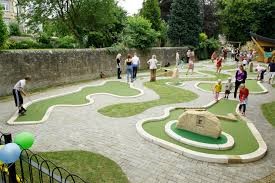
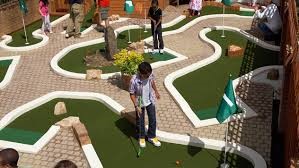
Felt Design
MINI-GOLF OPEN STANDARD or MOS: A non-standard system relating to all mini-golf courses not covered by the three other standardised systems.
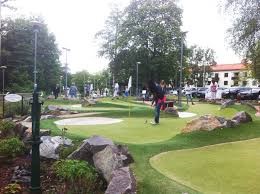
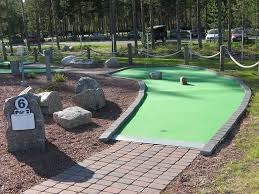
Mini-Golf Open Standard Design
The final hole of a great many miniature golf courses is designed to capture the ball at the end of a round, in order to prevent players from playing an additional ‘free round’. A popular method often used depicts the face of a clown, and if the ball enters the clown’s mouth, a bell sounds and the player wins a free game.
‘Glow in the dark’, miniature golf courses have also become quite popular in the cold, darker climates of countries like Canada and Finland.
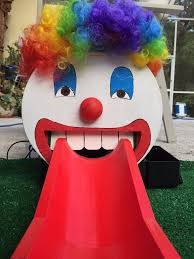
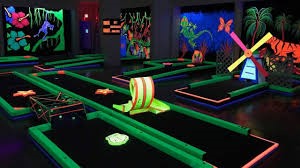
The British writer Andy Miller’s book ‘Tilting At Windmills [How I Learned To Stop Worrying and Love Sport]’ tells the story of the former sports atheist who, at the age of thirty, decided to try to change his way of life and become a lover of sport. After shivering for a season in the stands at Queens Park Rangers FC, he endured several futile attempts to learn to love other sports, before really showing his commitment by taking up the one sport which would ultimately become dear to his heart … crazy golf !
Ultimately, he headed for Europe where he competed in numerous international miniature golf events. In the Guardian’s review of the book it reported,
‘He proves himself to be an amusing and occasionally very funny writer. That may sound like faint praise, but it really isn’t, the writing of halfway decent comic prose being a skill even more underrated than winning a Crazy Golf hole’.
The ultimate ambition of the WMF is to have mini-golf recognised and included as an Olympic sport, with the first step being to achieve the inclusion of mini-golf in the World Games. However, snobbery and social suffocation by some of the members of the established golfing world still grips like poison ivy.
Golf has been played on the links at St Andrews since the 15 century and became a way of life for many local people. No one can precisely say who is to be credited with the invention of miniature golf, except that in the late 19 century the St. Andrews Ladies’ Putting Club undoubtedly initiated its evolution. So when next you chance to pass by a mini-golf course, perhaps during a stroll along the promenade at your favourite resort, take time to pause and reflect upon the essential contribution made by those youthful ladies of St. Andrews, which so many of us now enjoy.
Article © of Roy Case

